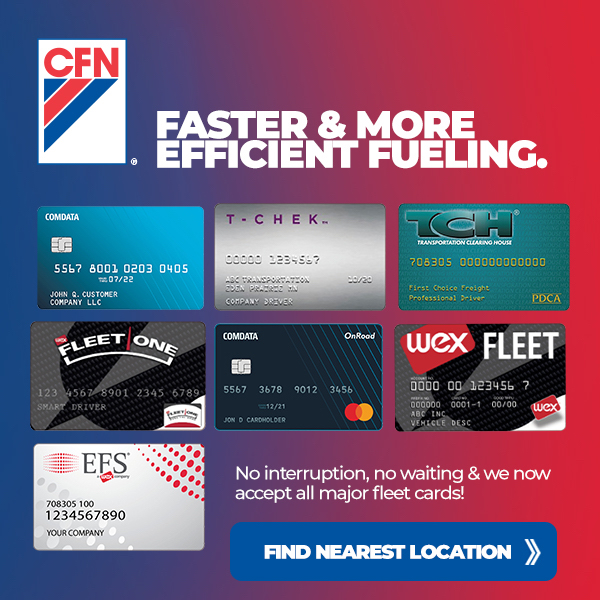
The transportation industry is evolving, and it’s imperative that fleet companies adapt to remain successful
By Mark Boada, Executive Editor
The e-commerce boom is changing the face of the commercial trucking industry, ever-increasing volumes of consumers’ purchases being delivered to their doorstep. In this interview, Anthony Sasso, head of TD Bank Equipment Finance discusses these trends and offers insights into how trucking companies can respond cost-effectively as they finance the reshaping of their fleets.
Q: Can you tell me a little about yourself and TD Bank’s Equipment Finance business? What insight does that give you into fleet management?
I’m the head of TD Equipment Finance and have been in the equipment finance space for more than 30 years now. At TD, we finance several asset classes, including medical, rolling stock, manufacturing, construction, marine and rail. We have a great deal of experience in the surface transportation space, specifically the trucking sector, since we have been financing assets for fleet owners for nearly 34 years. This has afforded us the opportunity to experience the cyclicality of the industry firsthand and understand how best to successfully support fleet companies through business cycles.
Over the last few years in particular, we have seen fleet management change dramatically, largely in response to changing consumer demands and the rise of e-commerce. As fleet companies determine how best to adapt, it’s important for them to engage with a strategic financial partner who brings deep knowledge of the industry and can provide extensive asset class and collateral expertise.
Q: How are consumer expectations shifting?
The impact created by the popularity of e-commerce and the digital marketplace phenomenon, also known as “The Amazon Effect,” has changed the composition of consumer buying behavior and expectations. Companies like Amazon and Walmart have fundamentally shifted what consumers expect by offering fast, free shipping and competitive pricing, which is now table stakes for online retail platforms. Many retailers now offer one-or-two-day shipping as a way to entice potential customers, sometimes even taking a small loss on shipping costs in the interest of customer acquisition.
E-commerce sales continue to grow. Recent reports indicate they grew by 15 percent last year, and accounted for more than 14 percent of total U.S. retail sales. As the digital marketplace continues to evolve, we’ll continue to see a seismic shift in how consumers shop. In fact, observers estimate that e-commerce sales will reach 17.5 percent of retail sales worldwide by 2021.
Q: What changes do fleet managers need to make in their fleet composition to accommodate these changes?
“The Amazon Effect” has forced fleets to adjust their business models to provide the low-cost and on-demand delivery service that consumers now demand. To remain competitive, companies need to reassess their business strategies and augment traditional long haul delivery with just-in-time (JIT) delivery. It’s imperative for fleet managers to assess their fleet composition, as these changing delivery patterns may require the investment of additional and different trucks that can provide the shorter, more frequent runs needed. This assessment can help them stay competitive and survive in the evolving distribution landscape.
Q: How has e-commerce disruption changed fleets and their financing needs?
The rise of e-commerce is probably the single largest source of disruption the trucking industry has ever experienced. As consumers continue to embrace online shopping and on-demand delivery service, companies are changing business models to incorporate shorter, quicker deliveries – known as last-mile delivery.
To do so requires a change in the composition of fleets. Alongside the larger trucks typically used for long-haul delivery on highways, fleets are looking to add smaller units designed for shorter trips that can easily navigate metropolitan and suburban areas. As e-commerce continues to rise, the demand for this different asset class will also continue to increase.
The shift in shopping patterns has additional wide-reaching implications for the trucking industry. One is greater seasonal volatility in shipping volumes. At the same time, the industry is experiencing increased costs, such as higher fuel prices and driver wages, which have resulted in a need to reduce operating costs.
Fleet managers must determine how to best manage expenses and remain profitable. One way is through flexible finance solutions that offer shorter financing terms and the ability to upgrade equipment frequently. For example, equipment leases provide the opportunity to commit to shorter life cycles and more frequent upgrades, enabling companies to successfully adapt to changing consumer demands, control costs and maximize on efficiencies.
Q: How does technology factor into these changes? What new technologies should fleet managers be incorporating into their equipment?
There have been a number of technological advancements within the transportation industry that contribute to increased efficiencies and reduced costs. Every year, manufacturers come out with vehicles that are more fuel-efficient and need less maintenance, which reduces their operating costs as they replace their equipment. Telematics systems are helping fleets to optimize their routes, further reducing fuel costs, while monitoring driver on-road behavior to improve fleet safety, prevent accidents and reduce their associated costs. Advances in computing and software allow companies to better track inventory across the supply chain, which ultimately leads to a more efficient operation. The rise of robotics and automation is also transforming warehouse logistics, reducing errors and defects.
While many aspects of the shipping operation still require a human touch, the automation of many labor-intensive tasks allows workers to focus on providing quality customer service. Looking ahead, we anticipate fleet companies to continue to invest heavily in innovation as a way to reduce costs, increase efficiencies and ultimately keep up with the competition.
Q: If you’re a fleet owner looking to keep up with e-commerce, what should you be doing from a financing perspective?
To remain competitive in the ever-changing transportation industry landscape, fleet companies searching for financing should consider solutions that offer a combination of flexibility, convenience and competitive pricing. By utilizing shorter equipment life cycles, companies can successfully adapt to the changing consumer expectations, maximize efficiencies and manage demanding delivery schedules.
Equipment leasing provides the flexible financial solution that fleet companies need given the continuous changing demands. In addition to providing low cost and short-term options, tax-oriented leases allow the lessor to claim the tax benefits of ownership through depreciation deductions and pass those benefits through to the lessee in the form of reduced payments, which are often fixed, presenting the lessee with the lowest option. There are a few different options fleet companies may want to consider:
• Fair Market Value (or Operating) leases. These provide the flexibility for lessees to either return, re-rent or purchase the equipment at the fair market value of the assets, making them ideal for fleet companies looking to upgrade models in a relatively short period of time. This type of lease enables companies to take advantage of fuel efficiencies and lower maintenance costs in newer truck models.
• Terminal Rental Adjustment Clause (TRAC) leases. These allow companies to purchase equipment at a pre-determined residual amount at the end of lease maturity, which makes it a desirable option for companies looking to resell these assets on the secondary market.
The transportation industry is evolving, and it’s imperative that fleet companies adapt to remain successful. By changing the composition of their fleets to provide shorter, more frequent deliveries, investing in more efficient long-haul vehicles and rethinking their delivery models, fleet companies can meet the challenges that the rise of e-commerce has introduced. In today’s dynamic marketplace, whatever the size or scope of the investment, fleet companies will need access to flexible financing options to be able to continue to meet the shipping needs of today and tomorrow.



